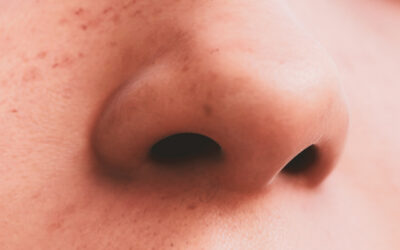Facial feminization is an important aspect for many trans women in their gender affirmation process. Not all women choose to undergo this type of treatment, but for many others, softening and harmonizing their facial features to reflect their gender identity can have a profoundly positive impact on their self-esteem and the way they interact with the world. In fact, when considering this type of treatment, a key question often arises: How do I choose between surgery and aesthetic medicine for facial feminization? Which option delivers better results? Is surgery necessary to achieve visible feminization?
The answer is clear: every face is unique, every body has its story, and every transition follows its own pace. That’s why facial feminization should be personalized. In this article, we explain the differences between aesthetic medicine and plastic surgery treatments to help you make an informed decision.
Facial Feminization: A Comprehensive Approach
Facial feminization is not a single, one-size-fits-all treatment. It’s a process that can include a variety of surgical and non-surgical procedures designed to soften and harmonize facial features, aligning them with traits that are socially perceived as typically feminine.
This approach may involve different areas of the face—such as the shape of the forehead, lips, nose, hairline, eyes and eyebrows, cheekbones, and skin texture. The best option is to work with a specialized team that can assess your case individually and holistically, taking into account your goals and your facial anatomy.
Facial Feminization Surgery
Facial feminization surgery involves modifying bone structures that cannot be changed through hormone therapy or aesthetic treatments. These procedures are usually performed under general anesthesia and require a longer recovery period. However, the results are permanent and can significantly change facial contours, influencing how others perceive your gender identity.
Some of the most common procedures include:
-
- Forehead reduction (frontal bone contouring) to smooth and reduce the brow ridge.
- Hairline advancement to reduce forehead height.
- Rhinoplasty to feminize the shape of the nose.
- Jaw and chin contouring to narrow and round out the lower face.
- Tracheal shave (Adam’s apple reduction) for a smoother neck profile
- Facial fat grafting to add volume to areas like the cheeks or temples for a more feminine fat distribution.
- Lip lift to shorten the distance between the upper lip and the nose, giving a more feminine appearance.
These facial feminization procedures are particularly recommended for trans women who transitioned as adults or who went through puberty without hormone blockers, as certain bone features develop during puberty and are not reversed with estrogen. They’re also suitable for those seeking a more noticeable, long-term transformation or dealing with significant facial dysphoria.

Non-Surgical Facial Feminization
Aesthetic medicine offers less invasive techniques that can enhance facial harmony without surgery or hospitalization. While it doesn’t change bone structure, it can soften features, enhance symmetry, and rejuvenate the skin.
Common treatments include:
-
- Hyaluronic acid fillers to sculpt the cheekbones, redefine the chin, soften the jawline, or enhance overall facial contours.
- Neuromodulators to relax forehead muscles and lift the eyebrows.
- Collagen-stimulating treatments to improve skin firmness.
- Skin quality treatments like facial mesotherapy, chemical peels, or technologies like Potenza or Morpheus to enhance texture, firmness, and pore size.
- Lip rehydration and contouring with hyaluronic acid, improving projection and volume without surgery, allowing for more voluptuous and defined lips. This is undoubtedly the most requested treatment.
Non-surgical facial feminization is ideal for those looking to explore gradual changes or enhance specific features, like the lips, without going under the knife. These treatments can also complement surgical procedures.
Which Option Is Best for You: Surgery or Aesthetic Medicine?
There’s no one-size-fits-all answer—your treatment should always be personalized and guided by a team experienced in facial feminization. At IM GENDER, some of the key factors we consider when helping you decide include:
-
- Personal expectations: Are you looking for a subtle change or a more dramatic one? Which facial areas concern you most?
- Facial characteristics: Can aesthetic medicine provide visible improvements based on your bone structure? Are there aspects that only surgery can change?
- Emotional and social context: Do you have support for post-surgical recovery? Would you prefer a step-by-step approach?
- Budget: While aesthetic medicine may be more affordable at first, surgery often yields permanent results that can be more cost-effective in the long run.
- Overall health: Certain health conditions may limit or influence your treatment options. It’s essential that your medical team is fully informed.
Combining Surgery and Aesthetic Medicine for a More Feminine Face
Many trans women combine both surgery and aesthetic medicine to achieve a more comprehensive result that suits their pace. Some start with aesthetic treatments and later move on to surgery. Others undergo surgery first and then use fillers or skin treatments to enhance volume or texture.
It’s also important to note that some surgical results cannot be replicated through aesthetic medicine, and vice versa. For example, aesthetic treatments can’t reduce the brow ridge or reshape the jaw, while surgery can’t improve skin quality or lip volume in the same way.
Choosing between surgery and aesthetic medicine is a personal decision that should be informed by a qualified team. At IM GENDER, we’re here to support you in understanding how to make the best choice for your facial feminization journey.

Would you like an assessment to determine which treatment is best for you?
Don’t hesitate to contact our team—we’re here to inform and support you.






